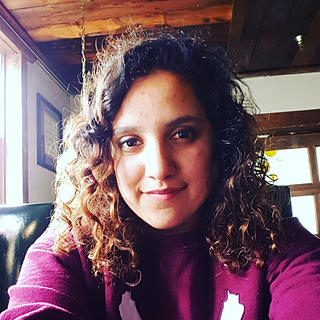Ed Ruscha
- Karen Gramajo
- Jan 31, 2018
- 3 min read

If you want to see one of the people that introduced font in front of landscapes and oceans, it’s Ed Ruscha. I fell in love with his work. In Princeton University Museum of Art had 5% of his artwork in, but that completely captured my soul. Twentysix Gasoline Stations (1962) made me want to research the man and I was enthralled. His intentions in making these artworks was to show common and humble elements as a documentaries . A mark in the history of driving up to a gas station or looking at letters. This pushes the idea of Pop Art as a way to pull the mundane from the consciousness. Let’s begin the understanding of the purpose of Pop Art. It's the material that's outside of its context or in combination with other materials that is out of place.

As Ed Ruscha put in one piece, OOF, Ruscha paints subjects alone in space of the canvas. They are usually large bold words or images floating in space. They mimic opening screens in movies or billboards. It’s a way to get the audience’s attention. This is how Ruscha does it, by painting a word in an eye catching font. It is like a poet considering a phrase. The artist changes the way how the reader sees the text. He also likes to add a bit of humor with his paintings. That is why I admire him. His work with everyday objects twist themselves. How was he inspired to do this type of art? It wasn’t the old art that provoked him. It was the advertisements. Ed Ruscha was born on December 16, 1937 in Omaha, Nebraska. He was born to a Catholic family. Though, Ruscha was born in Nebraska, the family lived in Oklahoma City for 15 years. Ruscha’s family were strict with their religion. Yet, the mother introduced her children to music, literature, and art. Which was great, because that was how Ruscho developed his skills at a young age. His fascination was with cartoons. When he grew older, he decided to apply to art school. His mother supported the idea, but his father didn’t. Until the father discovered that Disney hired graduates and give well paid jobs. In 1956, Edward Ruscha attended Chouinard Art Institute in California (Now called California Institute of Art). In 1960, Ruscha began working with Carson-Roberts Advertising Agency, L.A. He was a layout artist. Ruscha spent most of his summer in 1961 traveling through Europe. In the 1960s, his photographs, paintings, and collages were making popularity. For a while, he went under “Ed Russia” for Artforum Magazine. He is a man who influenced a new generation of artists in the Pop Movement. His 1960s work is influential and reflects literal representation in the absurd. He made other works beside his famous Twentysix Gasoline Stations.He made countless of other media, but they are odd. One of his edited portfolios Stained featured different materials like blood, vinyl, vegetable oil, grass stains, coffee stains, red wine, etc. There were seventy five sheets of these materials. They are my favorite because of how odd and humourous he is. This information are snippets of what he actually showed the world . Regardless if it’s old news to you. The man influenced a new generation of artists. One of them is Jeff Koons. He also influenced me to become a better artist because I love Pop Art and his series of Twentysix gasolines already stole my heart. Let me see if I can make my mark of great art and to influence future generations.















Comments